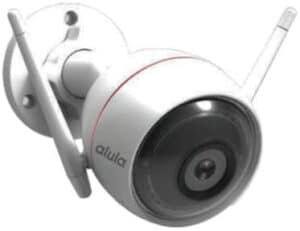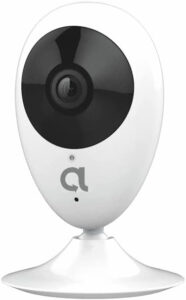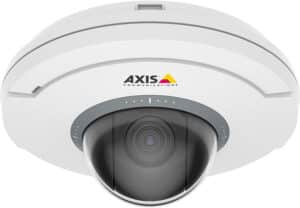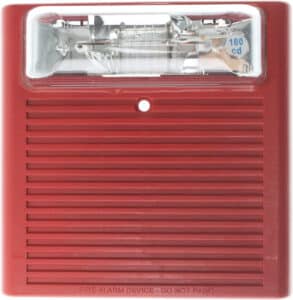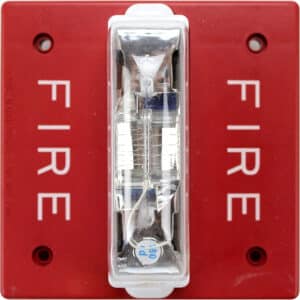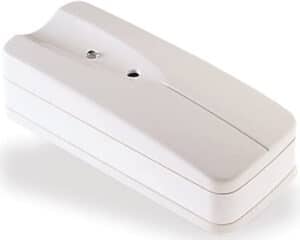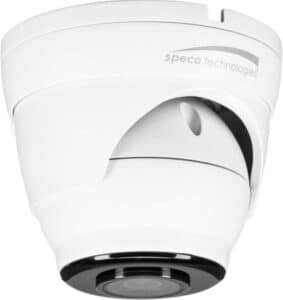How Does Wifi Cameras Work: A Comprehensive Guide for Beginners
In today’s tech-driven world, keeping your home or office safe and secure is a top priority. And when it comes to home security, WiFi cameras have become the go-to choice for people all over the world. Armed with high-tech features and easy-to-use interfaces, these devices have revolutionized the way we keep an eye on our homes and workplaces. So how does wifi cameras work exactly? In this comprehensive guide, we’ll explore everything you need to know about WiFi cameras, from what they are and how they work to the types of cameras available and how to use them. So, get ready to delve into the fascinating world of WiFi cameras!
Table of Contents
How Do Wireless Security Cameras Work: An Introduction for Beginners
Today’s wireless security cameras use wireless transmission technology to send video from the camera to your device, such as your computer or mobile device. Wireless security cameras use radio frequencies to send signals, which eliminates the need to run wires from the camera to your monitor. This wireless transmission technology is called WiFi and 802.11n.
Since wireless security cameras send video over WiFi, they operate on the same network as wireless home routers, tablets, and cell phones. Most wireless security cameras use WPA2 encryption, which protects data being transmitted between your camera and the network it is connected to.
Types of Wireless Cameras
Wireless security cameras come in a variety of types, including indoor and outdoor cameras, pan-tilt cameras, and night vision cameras. Indoor cameras are typically used to monitor the interior of a home or business, while outdoor cameras are for monitoring the outside of a home or business.
Pan-tilt cameras are capable of panning and tilting on a single axis to capture a wider field of view. Night vision cameras are designed to capture images in low-light situations. They typically use infrared LEDs to illuminate the area and provide a clear picture in the dark. No matter what type of wireless security camera you choose, they all require a power source and WiFi connection to send video over the internet.
Indoor cameras are typically used to monitor the interior of a home or business, while outdoor cameras are for monitoring the outside of a home or business. To connect the camera to a network, you will need an internet connection and a router. You can connect the camera to the router via a wired connection or a wireless connection. Additionally, some cameras come with an integrated router, making the setup process much simpler.
Outdoor cameras are typically weatherproof and designed to withstand exposure to the elements. They are usually wireless and come with a range of features, such as night vision, motion sensing, and wide-angle lenses. These features can help to monitor the outside of a home or business and can alert you to any suspicious activity.
Wireless security cameras come in all shapes and sizes, from discreet and compact cameras to larger, more robust cameras. When selecting a camera, it’s important to consider the size of the area you are trying to monitor, the range of features, and the cost.
Wired vs. Wireless Security Cameras: Which One is Better for Your Home Security?
Do you own a wireless security camera? If so, you probably use it to keep an eye on your home while you’re away at work – or you’re probably considering getting one.
However, you might wonder if wireless cameras are actually better than the wired variety. After all, they seem to be more expensive and seem less dependable. But they aren’t that bad, and here are a few reasons why:
Wired security surveillance cameras, like other wired security systems, have more restrictions. For example, the electrical outlet needs to be close to the camera (so that the wire has rope enough to reach it).
Wireless cameras, on the other hand, can be more flexible. You can put them anywhere in the room that you want, and the wires aren’t too visible. This makes them ideal for monitoring your child’s nursery while you’re at work, or monitoring your home while on vacation. Wireless cameras are also more affordable than wired cameras. Because they don’t require any extra wiring, they are more cost-effective.
In terms of reliability, both wired and wireless cameras have their pros and cons. Wired cameras are typically more reliable because they are connected to a power source and are not as likely to be affected by interference. However, wireless cameras may be less reliable because they depend on a strong network connection, and if the connection is weak, the camera may not work properly.
Ultimately, it depends on your individual needs and preferences. If you need a camera that is easy to install and is more affordable, then a wireless camera might be the best option for you . However, if you need a reliable camera that will always be connected and won’t be affected by interference, then a wired camera may be the better choice.
How Does a Wireless Camera System Work? The Basics Explained
Wireless security camera systems work by transmitting a signal from the camera to the base station. Wireless security camera systems can be set up in a variety of different ways. The extent of the wireless security camera system will depend on the quality, compatibility, and number of cameras that are needed.
Wireless security camera systems can be set up using several different methods.
Access point-based system: An access point-based system features a single NAS (network attached storage) box that connects all of the cameras and users. The NAS box acts as a wireless bridge, and it has a router.
Managed switch-based system: A managed switch-based system features a single switch that connects all of the cameras and users on the network. There is a single router that is connected to the switch, and the switch is separate from the cameras.
Wireless camera system: A wireless camera system features a single router that is connected to the cameras. The wireless cameras are connected to a wireless bridge, which is connected to the router.
The wireless bridge allows the cameras to communicate with the router.
Mesh network-based system: A mesh network-based system features a single router that is connected to a mesh network of wireless cameras. The cameras are connected to each other and the router.
The best solution for a surveillance system depends on the size of the system, the number of cameras, and the type of surveillance being conducted.
How Do Wireless Cameras Communicate with Your Home Network? A Technical Explanation
Wireless security cameras communicate with your home network through one of two ways:
Wi-Fi: Wi-Fi is the easiest method to use. A Wi-Fi network is a wireless network that uses radio waves to provide connectivity for computers, smartphones, and other mobile devices. Wireless security cameras allow you to connect to the camera directly through a Wi-Fi network.
Z-Wave: Z-Wave is another wireless protocol that provides connectivity for electronics. Z-Wave uses radio waves to communicate with devices, but it uses a different frequency than Wi-Fi does. Z-Wave has a longer range than Wi-Fi, so it’s a good choice for large properties that are difficult to connect wirelessly.
Both Wi-Fi and Z-Wave offer secure, reliable connections, so you can feel confident that your security cameras are secure.
Understanding Cloud Storage for Your Wireless Security Camera System
Your security camera system allows you to keep an eye on your property at any time, from anywhere. But if your security footage is stored locally, you could be missing some crucial footage if your security camera system goes offline.
To avoid losing crucial video footage, consider moving your recording to the cloud. Your camera system’s network video recorder (NVR) is where your video footage will be stored. In order to move this footage to the cloud, you need an NVR with a storage capacity that can automatically save snapshots to cloud storage. This means your footage is always stored securely, so you can access it anytime.
Cloud storage also makes it easier to access your security footage. You can access your footage from anywhere, and you don’t have to worry about losing your footage if your camera system goes offline.
When it comes to cloud storage, security is a top priority. Most cloud storage providers use encryption to secure your data. This means your footage is protected from hackers and other cyber-criminals.
The Role of Digital Video Recorder (DVR) in Your Wireless Security Camera System
A Digital Video Recorder (DVR) is a device that records and stores digital video. A DVR can record video from cameras that are connected to it, send the video to a computer, or stream the video in real time over the internet to a remote computer or mobile device.
A DVR can record from one or more cameras. A DVR can range from a simple device with one channel of recording, up to 64 channels with 4 terabytes of storage. The capacity of some DVRs is so large that they can record up to 100 days of continuous high-definition video. Many DVRs have slots for multiple hard drives.
A DVR is usually attached to a router or modem. Most DVRs will connect to the router using Ethernet, but some DVRs can also use Wi-Fi. Video is recorded in a digital format. Some DVRs are compatible with Digital Video Recording Format (DVR-F) but are usually an older format. The video recorded on the DVR can be accessed through a web browser and can be viewed on a computer, tablet, or mobile device.
DVRs are used for a variety of applications such as home security, surveillance, baby monitoring, and business security.
How to Maintain and Troubleshoot Your WiFi Security Camera System
We’ve covered how to choose a wireless security camera system for your home or office, as well as how to install it once it arrives. But what happens once your security camera system is in place? Maintaining and troubleshooting your system should both be high on your list of priorities.
Here are a few maintenance tips to keep in mind:
-
Keep the camera lens clean: A dirty camera lens can really affect the image quality of your footage – and make it harder to identify suspicious activity in your footage. Use a soft, dry cloth to wipe the lens clean on a regular basis.
-
Deactivate the camera when you’re not using it: Security cameras can be tempting targets for hackers. Unfortunately, this doesn’t just refer to internet-connected cameras. Although your camera may be connected to a secure network, it can be vulnerable to hackers who simply gain access to your home’s network.
-
Change the passwords on your cameras regularly: Just as you should change your home network’s passwords on a regular basis, you should also change passwords on your cameras. This ensures that if hackers gain access to your camera, they’ll be blocked from accessing your other devices and networks.
-
Perform software updates: Security cameras come with built-in software that needs to be updated on a regular basis. Updates keep your camera up-to-date with the latest security patches, which can help protect your footage from hackers.
Conclusion
In conclusion, we hope that this comprehensive guide on how wifi cameras work has given you a better understanding of this innovative technology. We’ve talked about the benefits of wifi cameras, how they work, their various types, and their features. By now, you should be able to choose the best wifi camera that meets your needs and budget.
At Xcessory Zone, we believe DIY home security is the way to go. Our e-commerce platform offers a range of products that are easy to install and use. From wifi cameras to motion sensors, we’ve got you covered. With our affordable prices, you can secure your home without breaking the bank.
If you’re looking to make your home more secure, then we encourage you to take action and check out our range of DIY home security products. Don’t wait until it’s too late, invest in your home security today. Thank you for reading.
FAQs
What are wireless home security cameras and how do they work?
Wireless home security cameras are surveillance devices that are wirelessly connected to a network, often through Wi-Fi. They capture live video footage and transmit the data to a receiver such as a computer or smartphone. This process allows remote viewing and monitoring of a location.
How do I install wireless security cameras in my home?
Installing wireless security cameras is relatively easy. First, choose a good location to install the camera. Second, connect the camera to a power source and set up the Wi-Fi connection. Finally, install any necessary software or apps on your devices and configure them to connect to the camera.
How do wireless cameras work outdoors?
Wireless outdoor security cameras are designed to work in harsh weather conditions. They typically have strong wireless connectivity to ensure that data is transmitted reliably. Additionally, they often have night vision capabilities and motion detection sensors to help detect and record any suspicious activities.
Can I use wired security camera systems instead of wireless ones?
Yes, you can use wired security camera systems instead of wireless ones. Wired security cameras communicate via cables, which can improve their reliability and reduce interference from other wireless signals. They may be more difficult to install than wireless cameras, however, as you’ll need to run cables to each camera.
How do wired security cameras communicate with other devices?
Wired security cameras communicate with other devices through cables, which transmit data to a receiver such as a recording device or monitor. This process is generally more reliable than wireless communication, but the cables can be more difficult to install. Nevertheless, wired security cameras are a good option for surveillance in areas with poor wireless connectivity.
Meet Our Partners!




